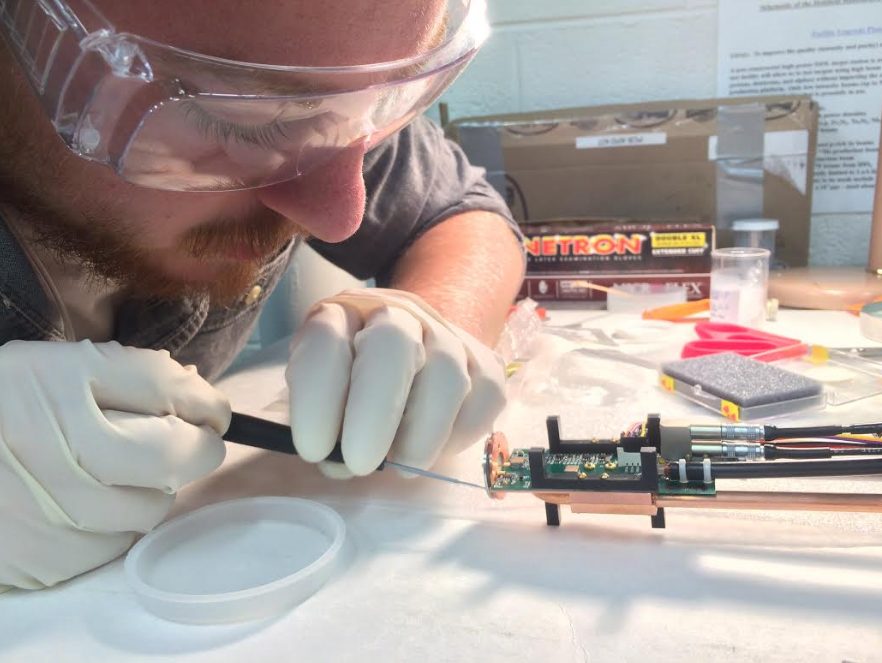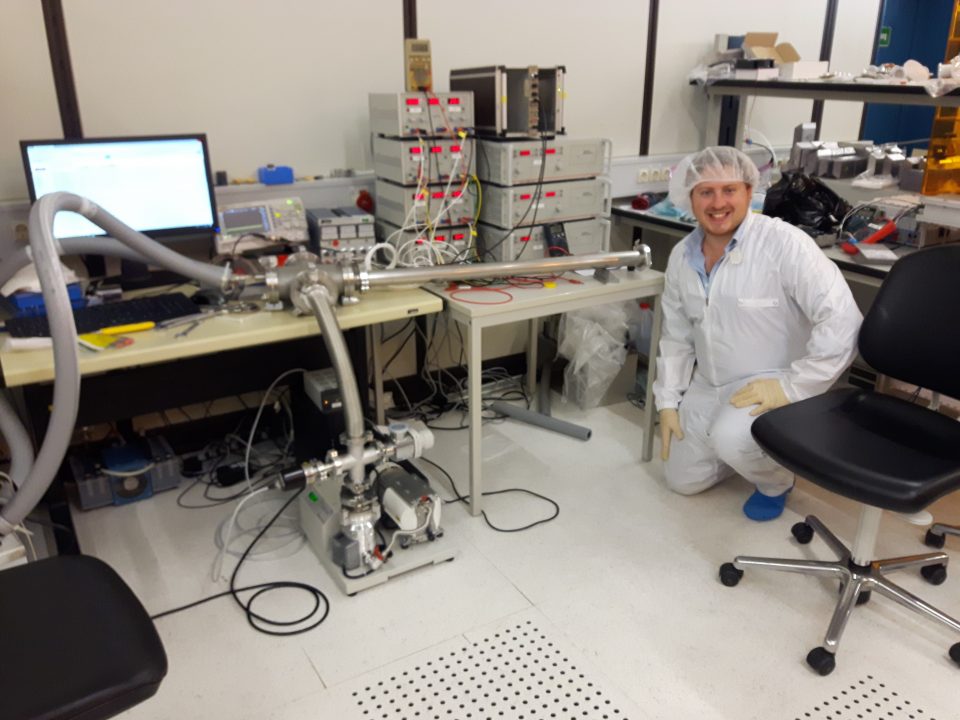Matthew Stukel
Queen's University
PhD Candidate - Particle Physics
Public Education Specialist - McDonald Institute
Matthew Stukel is a PhD candidate at Queen’s University working on the KDK (potassium(K) decay(DK)) experiment, under the supervision of Prof. Philippe Di Stefano. The goal of the KDK experiment is to measure the direct to ground state electron capture of K-40. This decay is very rare, and the measurement has implications for geochronology, particle and nuclear physics. Matt is also a McDonald Institute Public Education Specialist.
Contact Information
Room 145, Stirling Hall
Queen’s University
Kingston, ON, K7L 3N6
Phone: 613-533-6000 ext. 75543
Email: stukelm@gmail.com
@mstookz

Bio
I grew up in Ottawa, Ontario. I did my undergraduate degree in physics at Carleton University (Go Ravens). Originally, I wasn’t planning to go to Carleton but applied at the suggestion of my high school physics teacher. After completing a few co-ops, I realized that I wanted to pursue physics at a higher level and applied to graduate school at Queen’s University.
Q&A with Matt
What are your research interests?
My main interests are in the fields of nuclear and particle physics. I study highly forbidden and rare nuclear decays which can be backgrounds in many dark matter searches. Typically, these decays have never been experimentally measured, which is one of the most exciting parts of my research. Because the decays have never been measured, we have to think of creative and unique ways to get the data we want. I enjoy being a part of every step of the experimental process; from the design and setup to the data taking and analysis.
How would you describe your work at the most basic level?
Studying radioactive materials that have half-lives of a few billion years.
Why did you choose physics?
I choose physics because it is a nice combination of math, computer science and engineering. The work is always interesting and challenging. It is a field where I really enjoy coming to my office everyday.
How does your collaboration with key research facility partners work?
Our collaboration uses the facilities and expertise from all around the world. The Halbleiterlabor (German for Semiconductor Laboratory) Max Plank Institute for Physics fabricated the silicon drift detectors (SDD) for the KDK experiment. They integrated electronics which were designed by engineers at TRIUMF. The whole experiment took place at Oak Ridge National Laboratory in Tennessee, USA. There we combined our SDDs with the Modular Total Absorption Spectrometer (MTAS) detector. MTAS is one of the world’s largest TAS type detectors.
Share a personal piece of information that might surprise others.
I’m the captain of the Queen’s Graduate Physics Society basketball team. Developing this team for over the last few years has become a pet project of mine. We earned our first two wins
(after 48 games) in the Winter 2019 semester and I could not be prouder. I also worked as a Zip line instructor for 3 years in Quebec.

